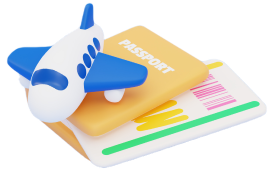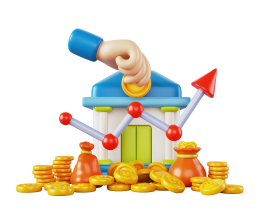-
Visas & Immigration
-
Taxes
-
Cost of Living
-
Companies Hiring
-
Relocation Companies
-
Jobs
-
Salaries
-
Healthcare & Insurance
-
Webinars
Cost of Living in San Francisco

Rebeka Meszaros
Rebeka is a professional content writer who specializes in marketing, business, travel, and expat tips. She enjoys sharing practical, down-to-earth advice, whether it's helping businesses better their marketing strategy or providing insights about living overseas. Rebeka adds a personal touch to her writing, ensuring that every piece connects with readers.

Oleksandra Dosii
Oleksandra is a dedicated marketer with a passion for growing HR-tech products. She believes content marketing is about delivering high-quality content that provides value—not just generating leads. Since 2016, Oleksandra has been involved in tech talent relocation.

Start Advertising

In San Francisco, a single person spends about $4,676 (around €5,220) a month on average, while a family of four can expect to pay around $11,345 (around €10,300) (Source: Numbeo).
Let’s break down the cost of living in San Francisco, we’ll cover things like housing, food, transportation, and childcare to help you plan your budget (all costs in USD).
Is San Francisco expensive?
Yes, San Francisco is one of the priciest cities, ranked 2nd in the U.S. and 7th globally. For a family of four, living costs are around $5,678, with rent adding another $5,667, bringing the total to $11,345 per month. A single person can expect to pay $4,676 monthly, with $1,569 in living expenses and $3,107 for rent.
In comparison, the cost of living in London is slightly lower, with a family’s total costs at $10,771 and a single person’s at $4,225. Berlin is much more affordable, with a family’s total costs at $6,329 and a single person’s at $2,469. Based on these comparisons, we can see that the cost of living in San Francisco is one of the highest in the world (Source: Numbeo).
Rent per month
Here’s a look at the average monthly rent in San Francisco, depending on the apartment size and location (Source: ):
- Apartment (1 bedroom) in the city center: $3,107
- Apartment (1 bedroom) outside of center: $2,684
- Apartment (3 bedrooms) in the city center: $5,667
- Apartment (3 bedrooms) outside of center: $4,520
For expats moving to San Francisco in 2024, rental prices are starting to rise after a few years of decline. While average rents are still about 20% lower than in 2019, the trend is shifting, and a one-bedroom apartment typically costs around $3,500 per month. With the city's population growing again, demand for rentals is going up, so prices may continue to climb in the near future. For expats, this means that the total cost of living in San Francisco is expected to increase again soon (Source: NAINorCal).
Best neighborhoods to live in San Francisco:
- Pacific Heights — Upscale living with Victorian homes, high-end shopping, and scenic views.
- Noe Valley — Family-friendly with parks, a strong community, and great walkability.
- Marina District — Waterfront living with bars, restaurants, and easy access to parks.
- Cole Valley — Spacious homes and proximity to Golden Gate Park, perfect for families.
- Nob Hill — Historic and luxurious, with upscale dining and great city views.
Up-and-coming neighborhoods:
- Outer Richmond — Affordable, near the ocean, and attracting new businesses.
- Bernal Heights — Bohemian, community-oriented, and still relatively affordable.
- Mission District — Vibrant, sunny, with amazing food, but still improving in safety.
- Glen Park — Underrated, with solid housing, good transit, and a charming vibe.
Areas to avoid:
- Tenderloin — Central, but with high crime and homelessness.
- SoMa (South of Market) — Modern, tech-driven, but high property crime.
- Hunters Point — Affordable but plagued by crime and environmental issues.
How to find an apartment in San Francisco
Finding a rental in San Francisco is tough due to high demand, low vacancy rates (around 3.1%), and expensive rent — averaging $3,107 for a one-bedroom in the center. First, figure out your budget, including rent, utilities, transportation, and groceries, as the cost of living in San Francisco adds up quickly. Use sites like Zillow, Craigslist, and Apartments.com, but also keep an eye out for "For Rent" signs in neighborhoods. Areas like Sunset, Richmond, and Bernal Heights are more affordable, while neighborhoods like Pacific Heights and SoMa are pricier. Timing matters, too — moving during winter months can help you find better deals as fewer people are looking.
Competition for rentals is fierce, so be ready with essential documents: proof of income (like recent pay stubs), a credit report, rental references, and a valid ID. You’ll also need cash for application fees, typically $30-$50 per application. Using tools like RentSpree can save time and money by letting you apply to multiple properties with one application. Look out for lease-up deals in new buildings, where landlords might offer perks like a free month’s rent or waived fees. Being prepared and acting fast can make all the difference in securing a rental in this competitive market.
If you need assistance with your housing search in San Francisco, we’re here to help. We can provide you with a quote or connect you with our trusted partners who have helped many users successfully find housing in the city.
Property prices
The average price per square meter to buy an apartment in San Francisco is around (Source: Numbeo):
- City center: $11,737/sqm
- Outside of the city center: $11,947/sqm
Buying property in San Francisco as a foreigner is entirely possible, but it comes with a few considerations. Although you don’t need US citizenship or a US visa to purchase property, securing financing can be harder for non-residents. Many US lenders require a higher down payment (often around 30%) and offer less favorable interest rates to foreign buyers. If you hold US permanent residency or a long-term visa, you may qualify for more competitive mortgage terms, including options like FHA loans by the US Department of Housing.
When purchasing property, you should get pre-approved for a mortgage, or consider paying in cash if financing is difficult. Work with a knowledgeable local real estate agent who understands San Francisco’s market. Also, make sure to include contingencies for home inspections and appraisals in your offer to avoid costly surprises. In the Bay Area, expect closing costs to be around 2% to 5% of the property price, and be aware of tax obligations, such as income tax on rental properties and potential capital gains tax when selling. For more information on taxes for foreign property buyers, visit the IRS foreign investment guide and explore the National Association of Realtors for help with property markets as a foreigner.
Utilities
A big chunk of your San Francisco cost of living is the monthly utilities (Source: Numbeo):
- Basic utilities (electricity, heating, cooling, water, garbage) for an 85m² apartment: $255
- Mobile phone monthly plan with calls and 10GB+ Data: $54
- Internet (60 Mbps or more, unlimited data, cable/ADSL): $64
Here are some tips to save on your San Francisco utility costs:
- Use off-peak electricity: Take advantage of lower rates by running appliances during off-peak hours. Check PG&E’s time-of-use plans to see if they work for you.
- Reduce water waste: Fix leaks (or get your landlord to do it) and install water-efficient fixtures to lower your bill.
- Recycle and downsize: Opt for a smaller trash bin and recycle more to reduce garbage costs with Recology.
- Shop around for internet: Compare providers like Xfinity or AT&T to get the best internet deals.
Public transport
Getting around San Francisco is easy and you have many options, including Muni buses, light rail, streetcars, and the iconic cable cars. Muni’s Clipper Card is the most convenient way to access these services, and it's accepted on all Bay Area transit systems. For eco-friendly options, you can rent a bike through Bay Wheels or hop on one of the electric scooters available across the city. Ride-share services like Uber and Lyft are also widely available. Explore the full Muni network map for detailed routes.
San Francisco travel ticket prices (Source: SFMTA):
- Single Ride: $2.50 with Clipper or MuniMobile, $3.00 cash
- 1-Day Visitor Passport: $13.00 — unlimited travel on Muni buses, light rail, streetcars, and cable cars
- 3-Day Visitor Passport: $31.00
- 7-Day Visitor Passport: $41.00
- Monthly Pass (Muni Only): $81.00
- Monthly Pass (Muni + BART in SF): $98.00
- Cable Car Single Ride: $8.00 (no transfers)
Taxi (Source: Numbeo):
- Taxi start (normal tariff): $4.15
- Taxi 1 km: $2
- Taxi 1 hour waiting: $39
- From the Airport to the city center: $56 (roughly €50)
Food
For affordable groceries and international foods, Trader Joe’s is a favorite among locals, while Whole Foods is perfect for those looking for organic products, though it is much pricier. Safeway is also a reliable, popular option for everyday shopping with reasonable prices. If you're into eco-friendly shopping, Rainbow Grocery is a must-visit for organic, bulk, and vegan items. Visit Ferry Plaza Farmers Market for fresh, locally sourced produce. Pro tip: many stores like Safeway and Whole Foods offer delivery services, which can be a time-saver. Plus, signing up for store apps can give you access to discounts and promotions, which can help with your San Francisco cost of living.
Here’s how much people spend on groceries in San Francisco on average (Source: Reddit):
- For a single person: $400-$600
- For a couple: $700-$1200
- For a family of four: $1,200-$1,500
Here are some typical grocery items to give you an idea of price (Source: Numbeo):
- Milk (1 liter): $1.60
- Loaf of fresh white bread (500g): $4.90
- Rice (1kg): $6.90
- Eggs (12): $5.34
- Chicken fillets (1kg): $15.64
- Domestic beer (0.5 liter draught): $8
Childcare
San Francisco has several childcare options for kids aged 0-13. If you need help paying for childcare, the city offers financial assistance based on income, which can ease the hefty San Francisco cost of living. You can use the Child Care Financial Assistance Calculator to check if you’re eligible. For more info, visit the Children’s Council of San Francisco.
Childcare types and costs: (Source: Childrens Council):
- Family child care homes (FCC): These are licensed providers who care for children in their own homes, often offering flexible hours. Prices usually range from $1,500 to $2,500 per month, depending on your child’s age.
- Child care centers: Also called preschools or daycares, these programs focus on early education and social skills. Expect to pay between $1,800 and $3,000 per month. Subsidized programs are available for lower-income families, though there might be waitlists.
- In-home care (Nannies/Au pairs): Hiring a nanny costs around $20 to $30 an hour, while an au pair averages $1,500 a month (plus room and board). Some families opt for shared care to cut costs.
- Co-op child care: Parents take turns caring for each other’s kids, with fees typically between $500 and $1,000 a month.
- Playgroups and exchanges: These are informal setups where parents share caregiving, often for free or a small fee.
- Preschool (or Kindergarten), full day, private, monthly for 1 child: $2,953 (around €2,680)
International yearly school fees (Source: International Schools Database):
- Silicon Valley International School: $37,000-$45,000
- East Bay German International School: $26,300-$33,300
- Ecole Bilingue de Berkeley: $35,300-$39,950
- Shu Ren International School: $27,950-$30,950
- International Primary School, yearly for 1 child: $31,333 (around €28,500)
Explore Other Cities
Need help finding housing abroad?

Fill out this form

Shoot us an email with your inquiry at [email protected].




















